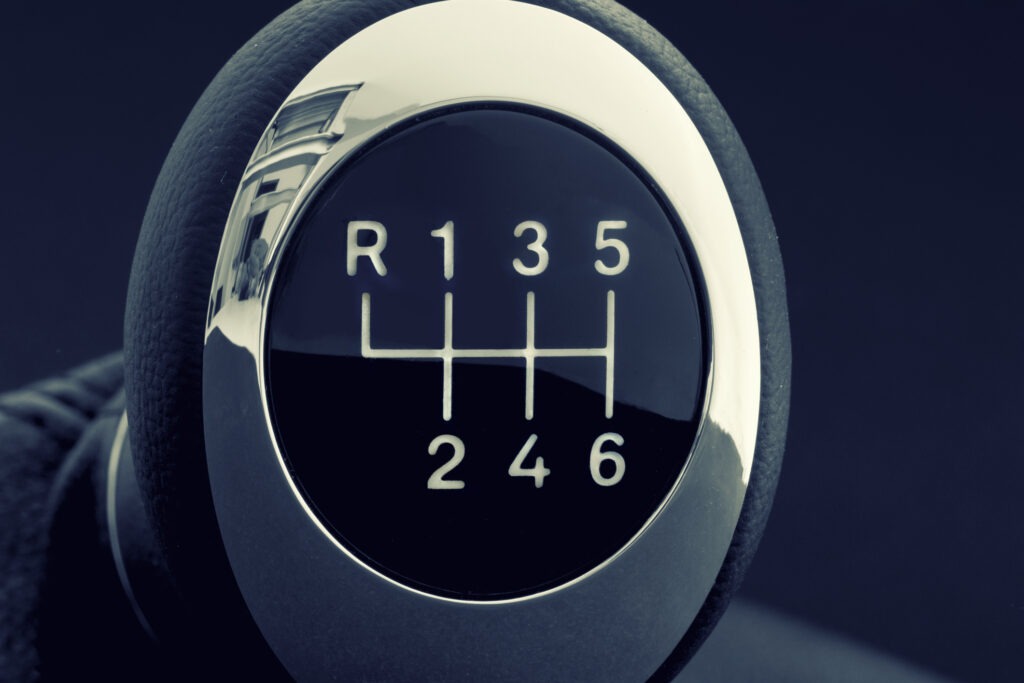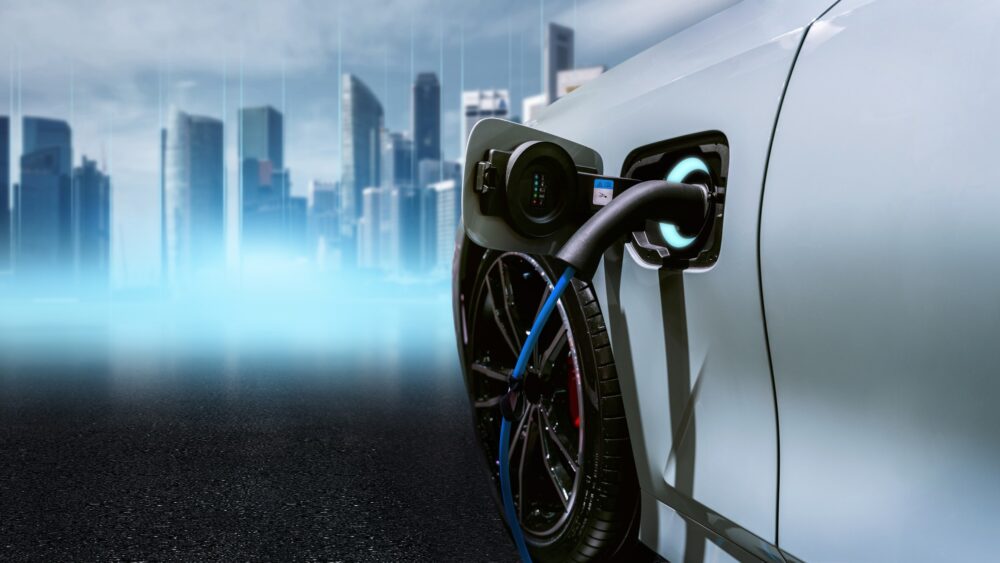14 April 2025

The manual gearbox faces an uncertain future. Will it fade into obscurity, or will it remain a fixture in an increasingly electrified and emissions conscious automotive landscape? Autovista24 web editor James Roberts investigates.
According to data from the SMMT, in 2019, over 50% of UK new-car registrations came with a manual gearbox. In 2023 this share decreased to 28.7%, with 73.1% of new-car registrations featuring an automatic gearbox.
This trend of decline has continued. As of 2025, registrations of vehicles with automatic transmissions are up 9.5%, while manual transmissions have fallen 2.6%.
One reason for this decline in manual gearbox uptake is the growth in popularity of battery-electric vehicles (BEVs), and plug-in hybrids (PHEVs).
In 2024, the number of electric vehicles (EVs) delivered worldwide increased by 26.1%. These vehicles use a single-speed transmission. This eliminates the need for multiple gears, or a manual gearbox.
‘BEVs currently only have a single speed transmission,’ confirmed Autovista Group senior residual value analyst Robert Redman. ‘So the only selection required is between drive and reverse. The move towards BEVs is probably one reason why the proportion of automatic-only new driving licences in the UK has increased substantially over the last 12 years. This went from 5.1% in 2012-2013, to 20% in 2023-2024. This trend is expected to continue as more new drivers consider a future where they may never have to drive a car with a manual transmission.’
There are now over 1.3 million BEVs on UK roads, up 38.9% year on year. This can help explain the shift towards automatic transmissions.
However, the overall reasons for increased automatic gearbox adoption are multi-layered, spanning electrified, as well as internal combustion engine (ICE) vehicles.
Explaining the shift away from manual gearboxes
Outside of the BEV market, many carmakers simply do not offer a manual gearbox option. Volvo and Mercedes-Benz are just two major carmakers that no longer produce ICE-powered manual transmission vehicles.
‘The rise of EVs has played a significant role in the decline of manual transmissions. However, this trend extends beyond EVs. Many brands are streamlining, and therefore not offering a manual transmission option,’ confirmed Ralf Sulzbach, senior project manager – consulting at Autovista Group.
Coupled with this, there have been rapid developments in automatic gearbox technology in recent years. This has made the option less of a binary choice, as well as blurring the lines between the different driving experiences.
One reason automotive manufacturers are increasingly phasing out manual transmissions is the high cost of development. This factor is exacerbated by declining consumer demand. Additionally, manual gearboxes no longer offer a clear advantage in terms of environmental impact or fuel efficiency.
Automatic improvements
Modern automatic transmissions, often managed by advanced computer systems, can optimise gear shifts with precision, resulting in improved fuel economy and reduced emissions.
For example, dual-clutch and continuously variable transmissions (CVTs), have become increasingly sophisticated. They offer faster shift times and a smoother driving experience. This often surpasses the performance of manual gearboxes. Their ability to deliver seamless acceleration and optimised fuel consumption has rendered them increasingly attractive to a broad consumer base.
‘With the much wider acceptance of automatic transmissions by the used buyer, the type of transmission has less of an impact on used valuations than it used to have,’ stated Redman.
‘Traditionally, they were less desirable in cars with smaller engines due to their impact on efficiency, and often the quality of the transmission. However, the latest automatic transmissions are much better, and can sometimes even improve fuel efficiency over their manual equivalent.’
As all powertrain types become more technologically advanced, automatic transmissions are proving the natural choice for carmakers. Manual gearboxes are simply less compatible with the software and processes of increasingly connected vehicles.
‘Several advanced driver-assistance system (ADAS) features, such as adaptive cruise control, are only compatible with automatic transmissions,’ added Sulzbach. ‘While automatics offer enhanced comfort and convenience, there remains a loyal customer base that still prefers a manual transmission, particularly among those accustomed to it.’
Emissions considerations
As well as improved fuel efficiency, modern automatic gearboxes are proving less environmentally impactful than their manual counterparts. This is something that has been brought into increasingly sharp focus for carmakers.
In line with broader sustainability objectives, the EU has introduced more stringent CO₂ emission standards, which came into effect this year. These regulations are set to tighten over time, culminating in a planned ban on the sale of new ICE vehicles by 2035.
‘With the non-BEVs being almost exclusively hybrids, automatic transmissions make the transitions between ICE and battery propulsion easier to manage,’ stated Redman. ‘They also make it easier for manufacturers to achieve the increasingly strict emissions regulations, offering more optimised gearing and more efficient stop start functions for example.’
In the UK, The zero emission vehicle (ZEV) mandate is a regulatory framework requiring manufacturers to sell an increasing percentage of zero-emission vehicles each year. Designed to accelerate the transition to cleaner transport, the mandate sets annual targets leading up to the phase-out of new ICE vehicle sales.
This legislation will impact production planning, model portfolios, and compliance strategies across the automotive industry. Within this context, the dominance of electrification will further serve to underline a move away from manual gearbox production.
‘The move towards tighter emissions controls and ultimately a zero-emission market is promoting the uptake of automatic transmissions,’ added Redman. ‘Also, the improvements in the transmissions themselves have made them more acceptable to the used buyer. Many drivers also find the convenience of an automatic transmission appealing, taking away the need to think about clutch control or correct gear selection.’
Taxes and restrictions
Away from the wider pan-continental emissions regulations, individual countries are introducing taxes and restrictions on higher-polluting vehicles. As well as the ZEV mandate, various urban areas in the UK have introduced Ultra Low Emission Zones (ULEZ).
ULEZ is a regulatory initiative in cities such as London, designed to cut vehicle-related air pollution by charging non-compliant vehicles. It impacts manufacturers and fleet operators by driving demand for cleaner, compliant vehicle technologies. Other European nations, such as France, have introduced similar schemes, and they can have a direct result on gearbox preference.
‘If you compare with 10 years ago the trend is changing. Automatic gearboxes now outsell new cars with a manual gearbox. This is largely down to the increase in production and sales of BEVs and PHEVs, which do not have a manual gearbox,’ outlined Ludovic Percier, senior residual value analyst at Autovista group.
‘In France there is a malus scheme for cars which cause pollution, and manual gearbox vehicles create more emissions. These factors are pushing buyers towards cars which do not have a manual transmission,’ he explained.
Manual appeal
Despite their decline in the new-car market, manual transmissions continue to present a cost-effective solution for certain market segments. Subsequently, they continue to maintain a solid presence in the used-car market.
Older manual vehicles offer advantages in both upfront vehicle pricing and ongoing maintenance. Their mechanically simpler design can contribute to enhanced reliability and reduced repair costs over the vehicle’s lifecycle.
But could the manual gearbox make a comeback? Despite the inherent automation of BEVs, plans are regularly emerging to integrate a manual element to the electrified experience.
As BEV sales have grown, carmakers periodically announce plans of having manual gears in an all-electric vehicle. In 2023 Toyota confirmed plans to develop a simulated manual transmission system for EVs, aiming to preserve the engaging experience of driving a manual car.
This innovation features a physical gear stick and clutch pedal, which, through sensors and software, modulate the electric motor’s torque to mimic the behaviour of a traditional manual transmission.
The system also includes artificial engine sounds delivered through the car’s speakers, enhancing the illusion of driving an ICE vehicle.
The prototype, tested in a Lexus UX 300e, allows drivers to experience gear shifts, engine braking, and even stalling, similar to a conventional manual car. Importantly, the system can be switched off, returning the vehicle to standard EV operation for convenience. Toyota plans to introduce this feature in production models around 2026, targeting driving enthusiasts seeking a more interactive EV experience.
Toyota’s proposed manual EV hints at a wider fondness for manual gearboxes. For many, the manual gearbox provides a more engaging driving experience. The act of shifting gears, mastering the clutch, and controlling the engine’s power creates a sense of connection with the vehicle that automatic transmissions arguably cannot replicate.
It is, therefore, no surprise that many producers of performance cars equip them with a manual transmission. Toyota’s rally-inspired Yaris GR comes with a six, or eight-speed gearbox. Similarly performance adjacent models such as Mazda’s venerable MX-5, and the Honda Civic Type R possess a manual transmission, which is seen as key to the driving experience
While manual transmissions no longer dominate the automotive landscape, they will likely continue to exist. The tactile engagement and sense of control they provide will ensure their enduring appeal among those who cherish the art of driving. Consequently, it is improbable that the manual gearbox will face complete obsolescence as it remains a popular choice in the used-car market.





